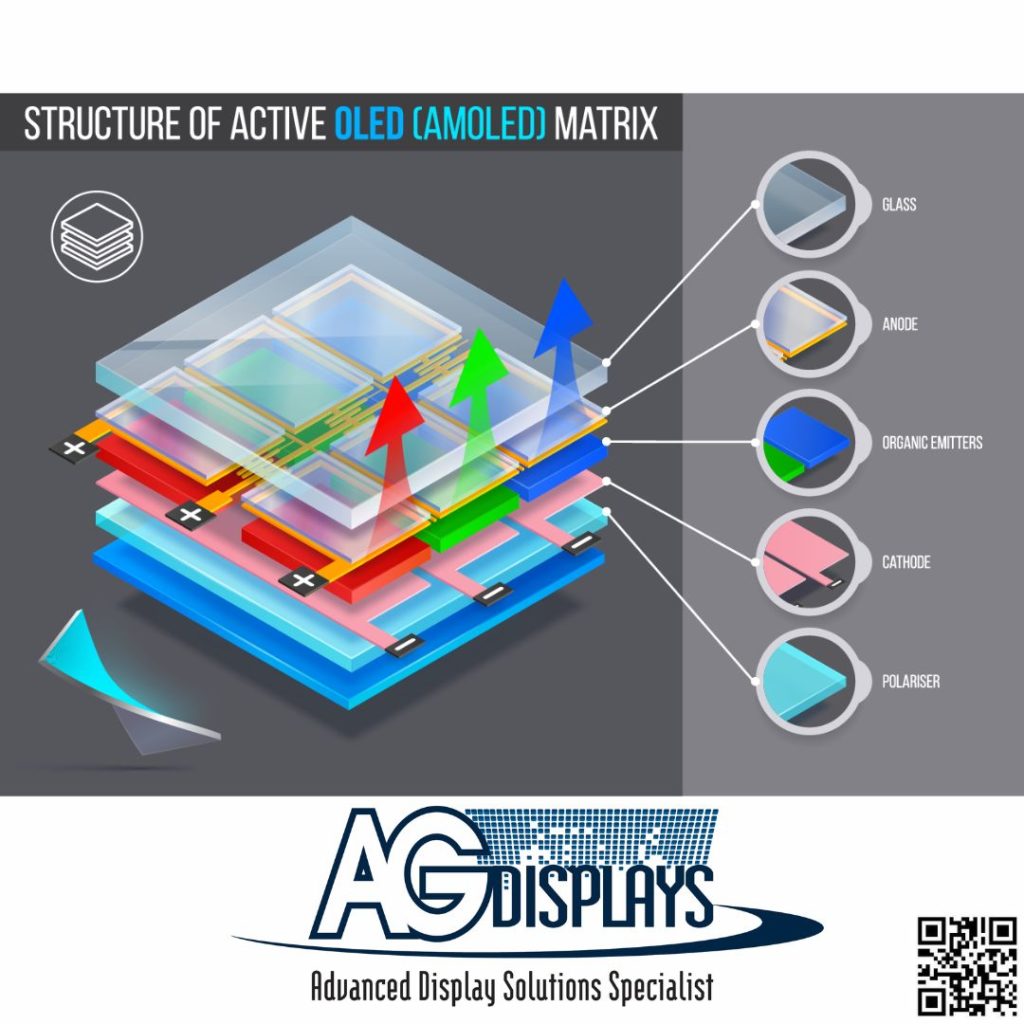OLED displays, or organic light-emitting diode displays, have been gaining popularity in recent years for their superior image quality and efficiency. OLEDs offer many advantages over their more common LCD counterparts, however there are a few reasons why they haven’t taken over the mainstream as the preferred display technology.

What are OLED displays?
OLED displays are a type of display technology that use organic materials to emit light. Unlike traditional LCD displays that use a backlight to illuminate the pixels, each pixel in an OLED display emits its own light. This means that OLED displays can achieve deeper blacks, higher contrast ratios, and more vibrant colors than LCD displays.
How do OLED displays work?
OLED displays are made up of thin layers of organic materials sandwiched between two electrodes. When an electric current is applied to the electrodes, the organic materials emit light. The color of the light emitted depends on the type of organic material used.
There are two main types of OLED displays: passive matrix and active matrix. Passive matrix displays are simpler and less expensive, but they are limited in resolution and refresh rate. Active matrix displays, on the other hand, use a thin-film transistor (TFT) to control each pixel individually, allowing for higher resolution and faster refresh rates.

Advantages of OLED displays
One of the main advantages of OLED displays is their superior image quality. Because each pixel emits its own light, OLED displays can achieve deeper blacks, higher contrast ratios, and more vibrant colors than LCD displays. This makes them ideal for watching movies and playing games.
Another advantage of OLED displays is their efficiency. Because each pixel emits its own light, OLED displays don’t require a backlight like LCD displays do. This means that OLED displays can be thinner and lighter than LCD displays, and they consume less power.
OLED displays also have wider viewing angled than LCD displays. With LCD displays, the image quality can degrade when viewed from an angle. With OLED displays, the image quality remains consistent no matter the viewing angle.
Disadvantages of OLED displays
One of the main disadvantages of OLED displays is their cost. Because they are still a relatively new technology, OLED displays are more expensive to produce than LCD displays. This means that OLED displays are typically only found in high-end smartphones and televisions.
Another disadvantage of OLED displays is their susceptibility to burn-in. Burn-in occurs when a static image is displayed on the screen for an extended period of time, causing the pixels to degrade unevenly. This can result in a ghost image being permanently burned into the screen. While burn-in can occur with LCD displays as well, it is more noticeable and harder to repair on OLED displays. OLED displays also have a shorter lifespan than LCD displays. While LCD displays can last for tens of thousands of hours, OLED displays can begin to degrade after as little as 1,000 hours of use. This means that OLED displays may need to be replaced sooner than LCD displays.

Creating the Rugged OLED
Ruggedizing an OLED display refers to the process of making the display more resistant to physical damage, such as drops, impacts, and exposure to water or other liquids. This is important in applications where the display is likely to be subjected to rough handling or environmental hazards, such as in military, industrial, or outdoor settings. Ruggedizing an OLED can be achieved in several ways:
Reinforced Glass: One of the most effective ways to ruggedize an OLED display is to use reinforced glass for the display panel. Reinforced glass, such as Gorilla Glass or Dragontrail Glass, is chemically treated to increase its strength and resistance to scratches and impacts. This makes the display more durable and less likely to crack or shatter when dropped.
Protective Coatings: Another way to ruggedize an OLED display is to apply protective coatings to the surface of the display. These coatings can be made of materials such as silicone, polyurethane, or epoxy, and they provide a layer of protection against scratches, impacts, and moisture. Some coatings can also provide additional benefits, such as reducing glare or improving visibility in bright sunlight.
Sealed Enclosures: In applications where the OLED display will be exposed to water or other liquids, it may be necessary to seal the display and its enclosure to prevent water ingress. This can be done using gaskets, seals, or adhesives to create a watertight seal around the display and its connections. The enclosure itself can also be made of materials that are resistant to corrosion and rust, such as aluminum or stainless steel.
Shock Absorption: To protect the OLED display from impacts and vibrations, it may be necessary to incorporate shock absorption features into the design. This can be done by using shock-absorbing materials, such as rubber or foam, to cushion the display and absorb the energy of impacts. In some cases, it may also be necessary to mount the OLED display on a shock-absorbing platform or to use suspension systems to isolate it from vibrations and shocks.
Temperature Regulation: OLED displays are sensitive to temperature and can be damaged by exposure to extreme heat or cold. To ruggedize an OLED display, it may be necessary to incorporate temperature regulation features into the design. This can be done by using materials that are resistant to high temperatures or by incorporating cooling or heating systems (such as transparent heaters) into the enclosure to maintain a stable temperature range.
Ultimately, ruggedizing an OLED display requires careful consideration of the environmental hazards that it may encounter, as well as the performance requirements of the application. By using reinforced glass, protective coatings, sealed enclosures, shock absorption, and temperature regulation features, it is possible to create an OLED display that is durable, reliable, and able to withstand the demands of harsh environments.

